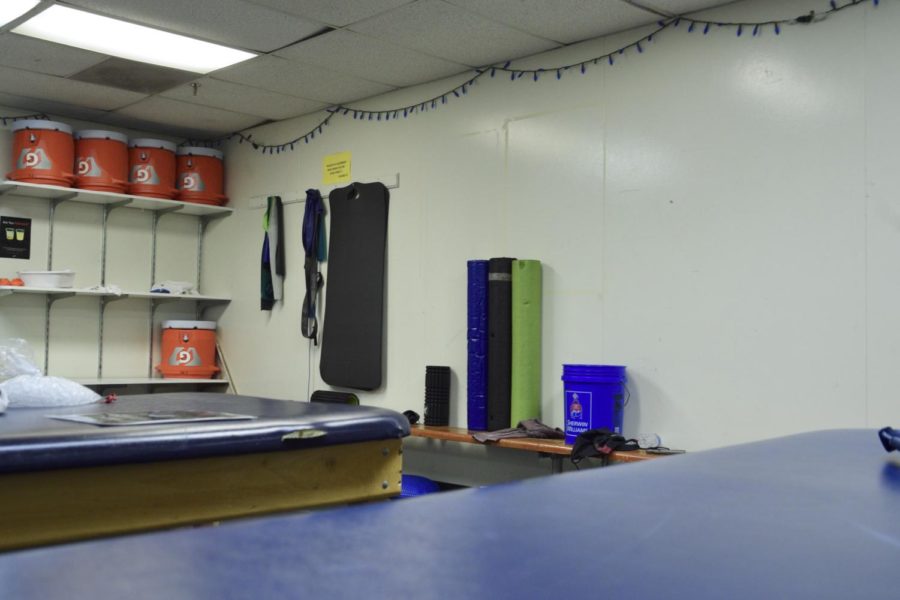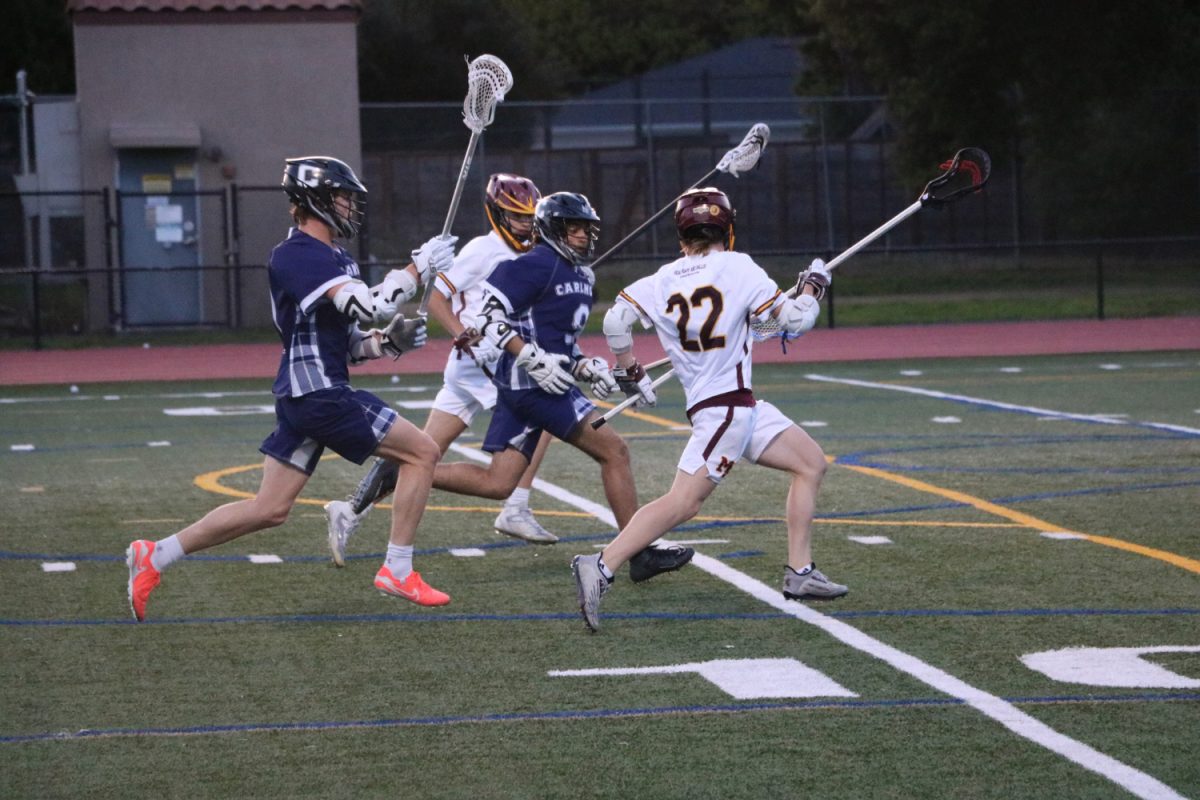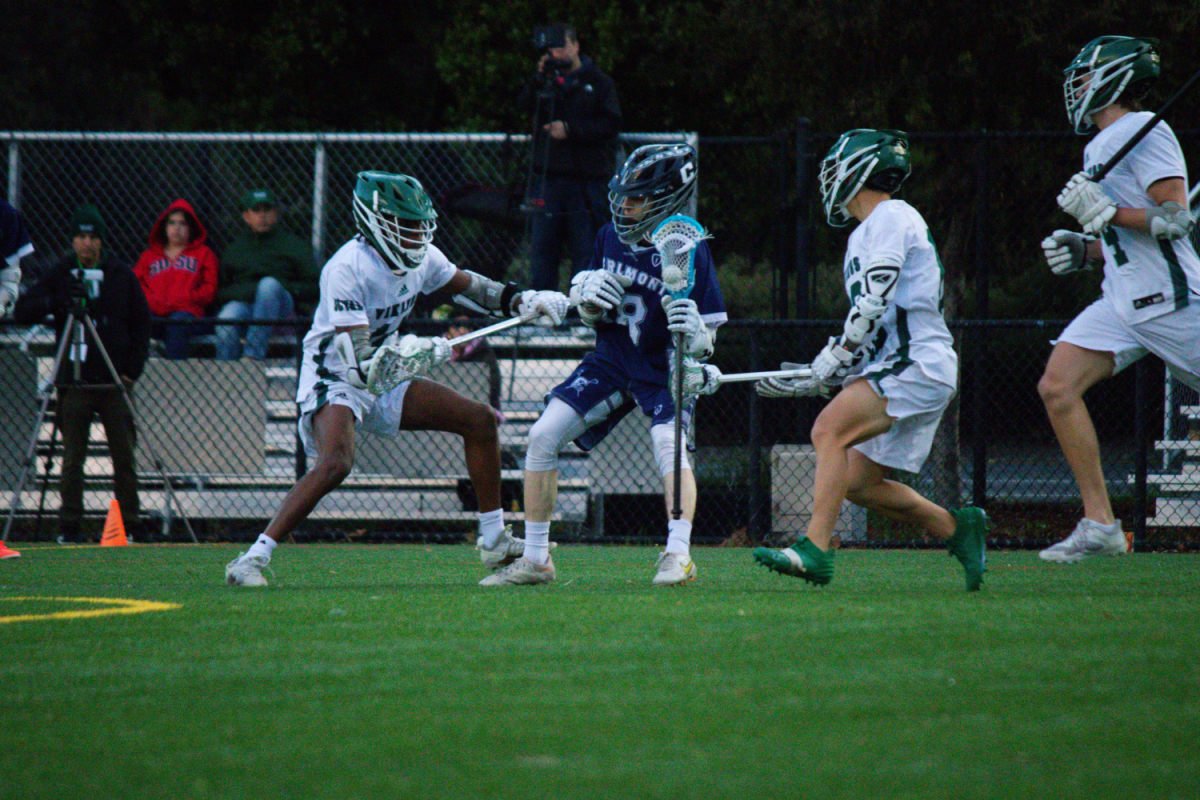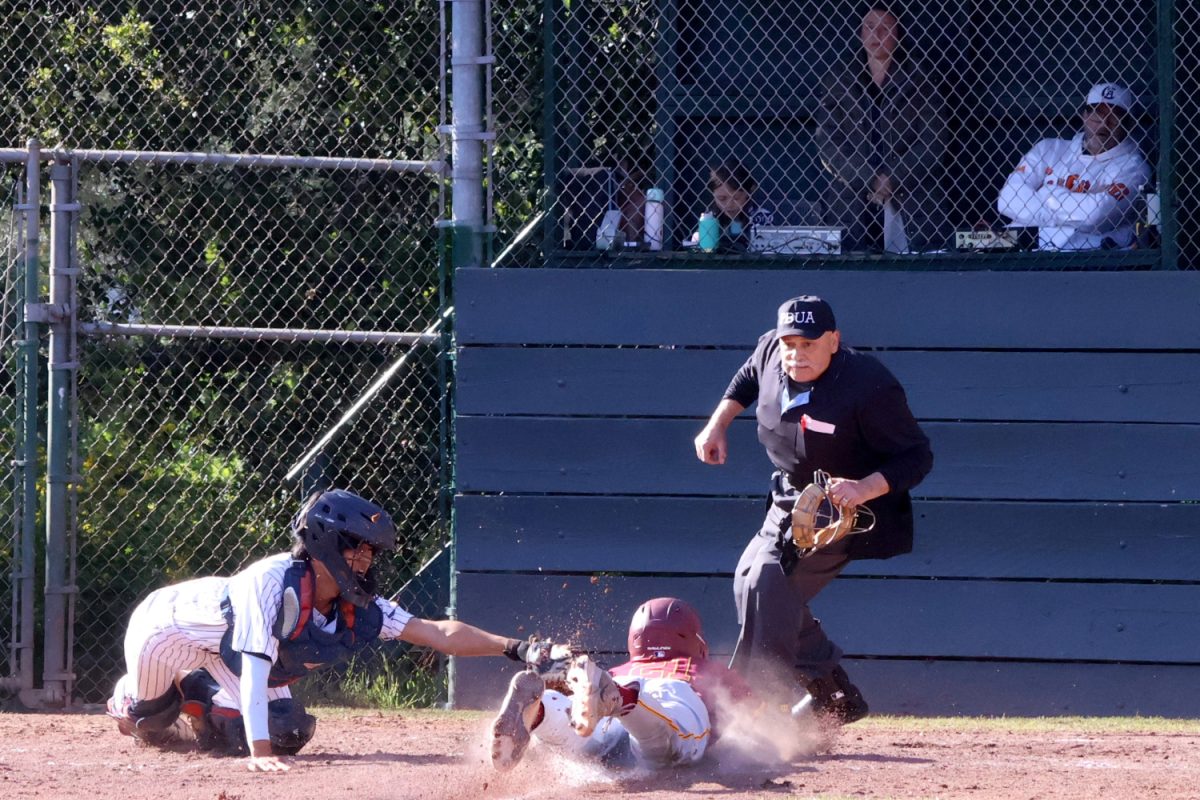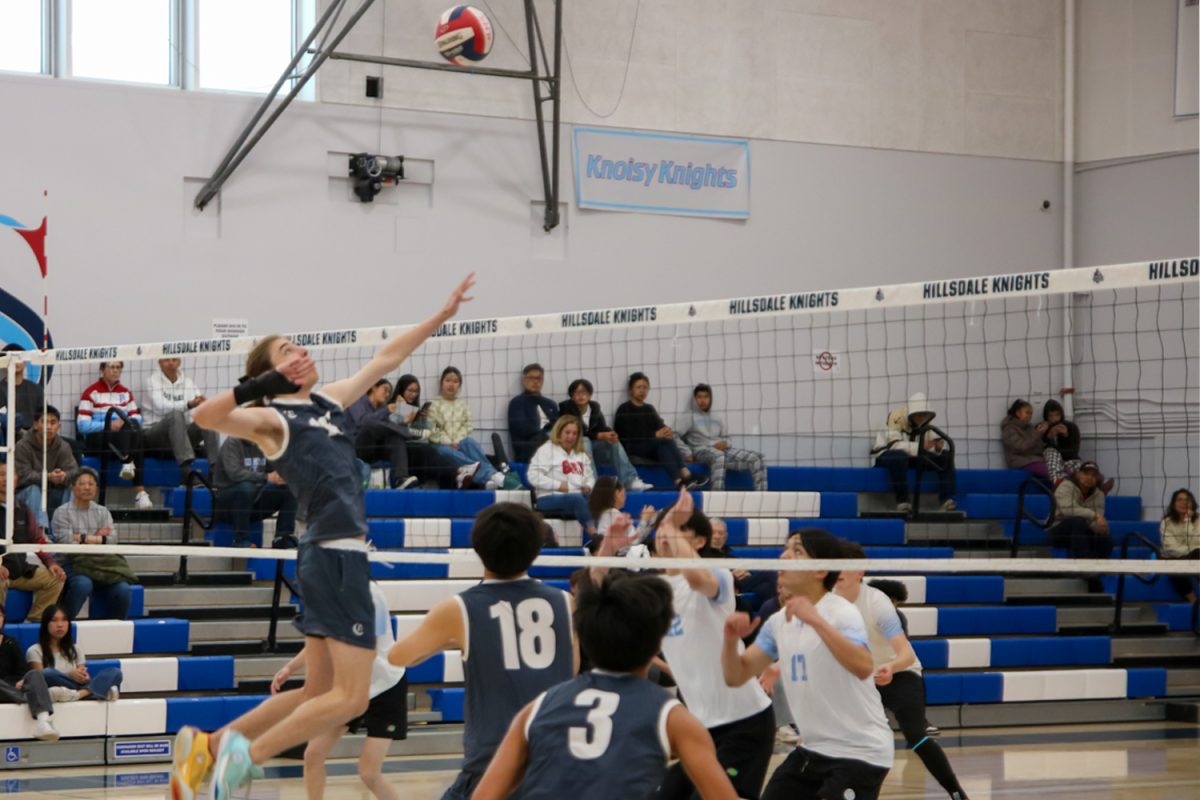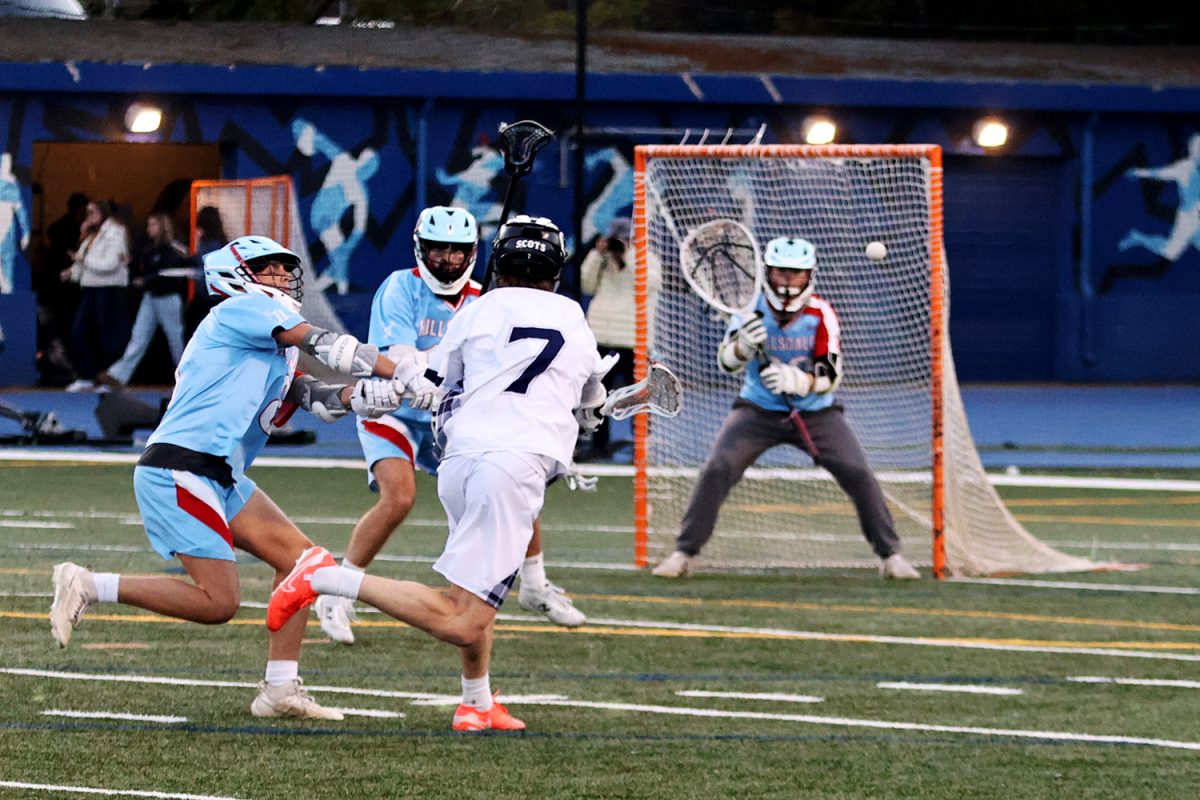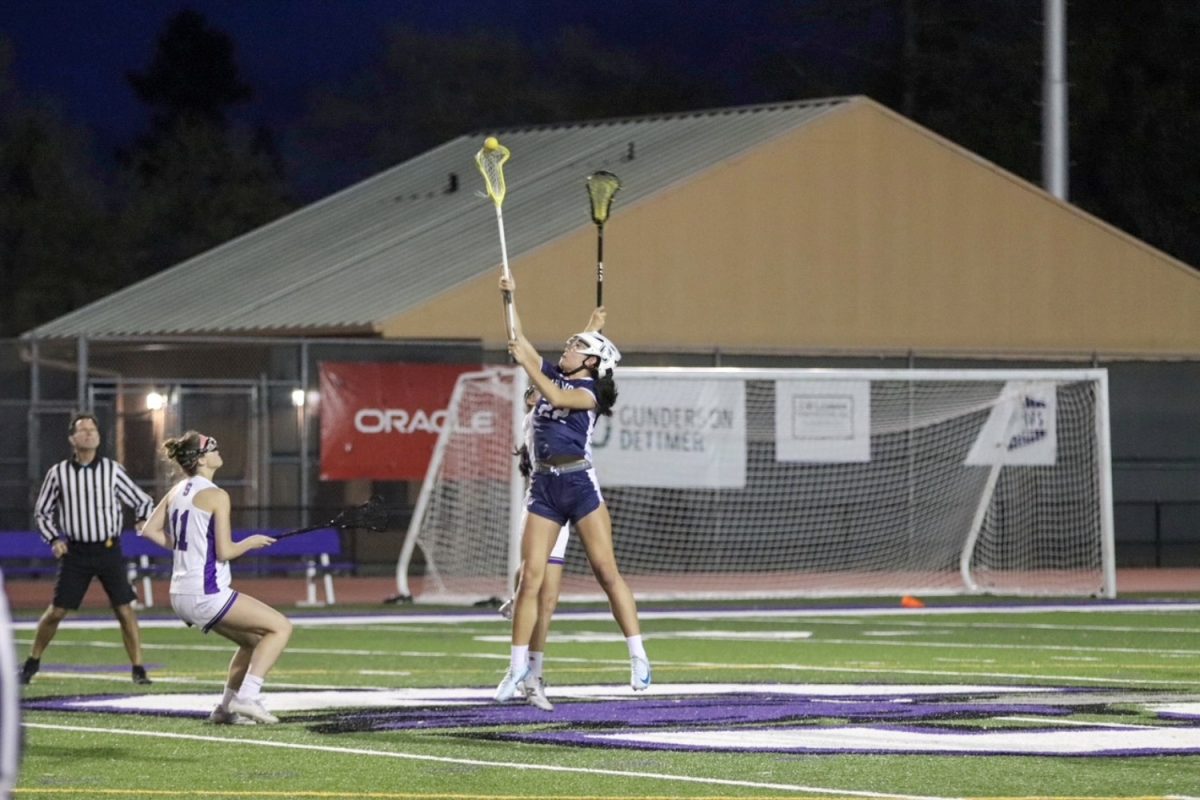Sports injuries are common among athletes and can have long-term effects, but many of these injuries are preventable.
Jasyn Chidester is Carlmont High School’s athletic trainer; it is his first year at Carlmont. Chidester was previously the head athletic trainer for club sports at Santa Clara University.
Chidester believes that many injuries are preventable and that an athlete must take care of their bodies before an injury occurs.
According to Chidester, the leading cause of injuries comes from improper warm-ups. Having a solid dynamic warm-up and stretching before intense exercise is especially important for an athlete. Chidester recommends doing warm-ups that incorporate motions that are specific to the sport the athlete is playing. For instance, light jogs, karaoke, and side shuffles are all good exercises to prep the athlete’s muscles for more rigorous activity.
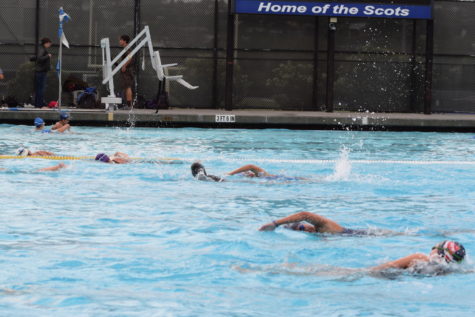
JV and varsity girls water polo swim laps to warm up before playing.
Chidester said, “One thing that I see is people who haven’t adequately warmed up when weightlifting. They aren’t getting lower weights and aren’t getting themselves into the correct position. Or when running, they go off and sprint immediately without loosening up their muscles.”
Chidester also mentions that a strength and conditioning coach can help athletes strengthen the muscles around their joints. This process helps the athlete’s body get used to new motions.
Recently, Anjali Mehta, a sophomore on the varsity tennis team, reinjured her hip. She was eager to get back on the court after her original injury, but she soon injured herself again. Mehta has been out for a week and a half. She plans to get back on the court in a week.
Mehta said, “I’m going to try to do more physical therapy because I’m prone to injury. I get injured a lot, so to compensate for that, I want to do a lot of physical therapy and stretches so that I don’t get injured again.”
Chidester also believes that the time spent off the court or field is equally as important as the time spent playing the sport.
According to Chidester, sleep is significant to a player’s performance. Because of this, a student-athlete should be getting around eight hours of sleep a night.
Additionally, one must back up a good night’s rest with healthy lifestyle habits. For example, athletes must stay hydrated and frequently replenish their bodies with water as they exercise.
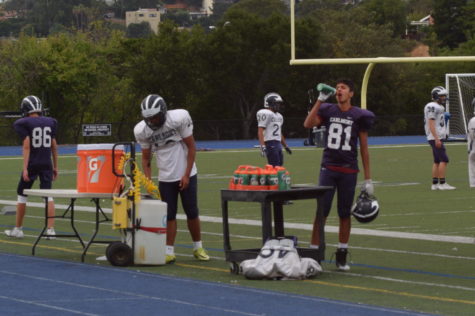
Nihaal Nayar, a sophomore, stays hydrated during JV football practice.
Other lifestyle habits that Chidester emphasizes are eating healthy and eating the right foods at the right time. A balanced diet is crucial to an athlete’s performance. He recommends that athletes eat a three to one carbohydrate to protein ratio after exercising.
Chidester said, “A lot of people think they need to load on proteins, but you need to replenish your carbohydrates as well and then take an adequate rest period before exercising.”
Taking a break from a sport, especially during the off-season, is beneficial as well. It provides an opportunity for the body to rest from the exercises or sports.
However, this doesn’t mean that the athlete should stop exercising altogether. Instead, Chidester recommends playing another sport, running, or even doing another type of exercise purely for fun. This way, the muscles used for playing the primary sport aren’t always getting worked and will have an opportunity to rest.
Curly Raddavero, a freshman, plays both JV volleyball at Carlmont and club soccer.
Raddavero said, “Running in soccer helps me move faster in volleyball. It also helps me read the ball better when passing.”
Chidester’s training room is located under the gym facing the football field. He is available Monday through Fridays from 2:45 p.m. to 7 p.m.


